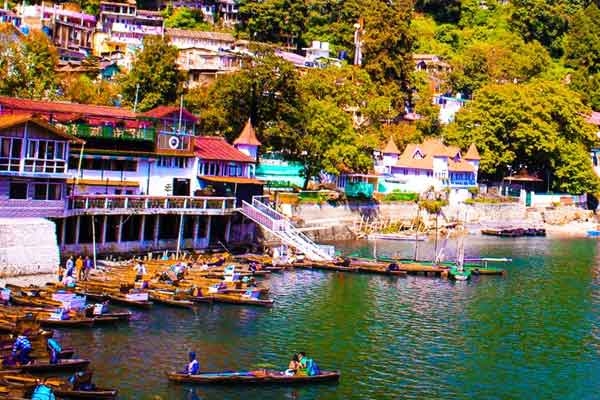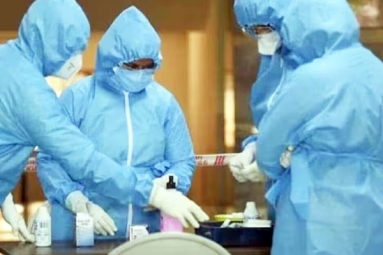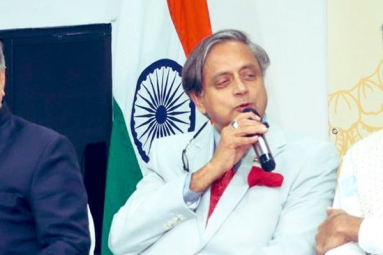
(Image source from: Canva.com)
Deserted streets. No vehicles in sight. Ample parking space. When these terms are mentioned, numerous locations might come to mind, but Nainital in Uttarakhand is likely not one of them right now. This time of year typically sees an influx of tourists, yet both the town and its inhabitants are currently undergoing an unexpected situation that is far from advantageous for many. This change stems from a notable decrease in tourist arrivals. As per conversations with locals, this downturn could not have been timed worse than during the peak summer months of May and June. Digvijay Singh Bisht, President of the Nainital Hotel Association, shared with NDTV that there has been a dramatic reduction in hotel and resort reservations. He noted that occupancy rates have fallen by as much as 90 percent over the past month.
"Bish told us that cancellations were recorded even for June, and there were no spontaneous visitors. This contrasts sharply with previous years." Other hoteliers, taxi service operators, and local vendors in Nainital expressed similar sentiments; nearly all of them highlighted a sudden and steep decline in tourist numbers to this renowned "lake district" of India. Rana Singh, a hotel owner with 35 years of experience in the hospitality industry, reported that his establishment has experienced a 70 to 80 percent decrease in bookings. He emphasizes that this drop is surprising, given that Nainital enjoys more favorable weather conditions than many other hill stations in Uttarakhand.
“Visitors are opting for destinations like Bhimtal and Mukteshwar instead, while Nainital seems to be overlooked,” Singh remarked. Amrit, a taxi service operator who has served tourists in Nainital for over a decade, reported a 50 percent decrease in cab bookings this month. The months of May and June typically account for nearly 80 percent of their yearly reservations. This significant downturn has resulted in considerable financial losses for him and many others in similar vocations. Amit, who operates a well-known local business in the area, echoed Amrit’s worries, stating, “A season like this has a profound effect on our revenues for businesses that rely solely on tourist traffic.”
Peak tourist season is vital for Nainital's economy. Historically, it has been a driving force for local economic growth and has created numerous job opportunities for residents. Several factors are behind the decline in tourism in Nainital this summer. Let’s delve deeper into what has led to this once-thriving destination fading into obscurity. In April 2025, a terrorist attack in Pahalgam, a popular spot in Jammu and Kashmir, took the lives of 26 civilians, most of whom were tourists. This tragic event sent shockwaves throughout the nation, amplifying security worries. Since then, heightened tensions along the India-Pakistan border have deterred many from traveling to any location, including tranquil hill stations like Nainital.
Bisht points out that a reduction in tourism has been observed in several other states as well. "I received a call from members of our association in Kerala who were inquiring about the situation in Uttarakhand. They informed me that their occupancy rates had also declined since the onset of the conflict," he shares. This atmosphere of uncertainty has led many Indians to think twice about visiting popular tourist spots. On May 1, unrest erupted in Nainital following the alleged assault of a 12-year-old girl by a 60-year-old man. This incident ignited protests and acts of vandalism in the area. The authorities arrested the suspect, Osman, who works as a contractor, and increased police presence to avert further disturbances.
As news about the girl's medical examination circulated, sizable protests took place outside the police station. Numerous businesses linked to the local Muslim community were damaged, and a mosque was attacked with stones. Videos of the protests and violence quickly spread across social media, instilling a sense of dread and uncertainty among potential visitors, many of whom decided to cancel their trips to the town. "While Nainital is entirely safe now, the media coverage and news reports about the unrest have instilled fears in tourists," remarks hotelier Singh.
Among the various reasons locals cite for the dip in tourism, one prevalent concern is the management of tourist traffic by the administration. "Visitors are not allowed to drive their own vehicles into the town. They are required to park at least 10 kilometers away from Nainital, which is inconvenient for those wishing to travel in their personal cars," explains Amrit. He further notes that parking fees in government areas have surged from Rs 130 to Rs 500 per day, an effort made to alleviate traffic congestion that had been troublesome for tourists. "No one wants to endure 6 to 7 hours stuck in traffic when they’ve come for a relaxing weekend," comments local entrepreneur Amit.
Amrit, who runs a local taxi service, claims that police at checkpoints have been advising tourists to steer clear of Nainital due to traffic issues. The imposition of toll taxes has also emerged as a significant factor. New toll booths were established at Barapather and Fanshi Ghandera as part of an Environment Tax initiative. This decision was taken during a meeting of the Nagar Palika Nainital board, following directives from the Uttarakhand High Court. The objective of these new tolls is to manage vehicle entry and generate revenue for environmental conservation efforts in the area. A representative from the District Magistrate’s office in Nainital informed NDTV that the rise in taxes and parking fees aims to regulate traffic flow. Additionally, the goal is to limit the number of cars entering the town. The fees comprise a toll tax of Rs 110, parking fees of Rs 500 per day, and a bridge tax of Rs 110 to access the renowned Mall Road.
"To help alleviate traffic congestion, private vehicles are requested to park several kilometers away. Only guests whose hotels provide parking will be permitted to drive into Nainital," stated the spokesperson. Nevertheless, both locals and hotel operators remain optimistic that the tourism season may bounce back and that visitors will once again populate Nainital's streets. Amit expressed that the newly implemented regulations could draw a different demographic of travelers—those who are more deliberate and inclined to invest more in the local economy. Locals we interviewed noted a significant uptick in tourist activity over the past weekend.
"Last week, occupancy rates climbed to 40 percent as tourists are beginning to return now that the border conflicts have subsided," noted Bisht. Other hotel owners, including Sonu Chhabra, who runs a hotel in the area, are anticipating that the long weekend for Independence Day in August could result in a spike in guest numbers. "We are optimistic that visitor numbers will reach a more normal level by June. However, it still doesn't compare to the figures from the previous year," Bisht added.









